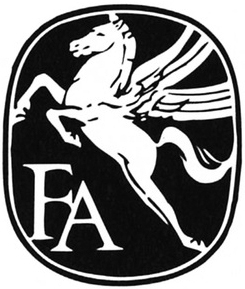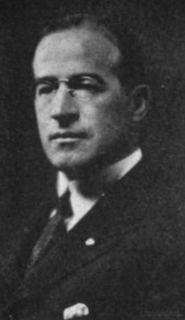Related Research Articles

Aerospace is a term used to collectively refer to the atmosphere and outer space. Aerospace activity is very diverse, with a multitude of commercial, industrial and military applications. Aerospace engineering consists of aeronautics and astronautics. Aerospace organizations research, design, manufacture, operate, or maintain aircraft and spacecraft.

Fairchild was an American aircraft and aerospace manufacturing company based at various times in Farmingdale, New York; Hagerstown, Maryland; and San Antonio, Texas.
The Curtiss-Wright Corporation is a manufacturer and services provider headquartered in Parsippany-Troy Hills, New Jersey, with factories and operations in and outside the United States. Created in 1929 from the consolidation of Curtiss, Wright, and various supplier companies, the company was immediately the country's largest aviation firm and built more than 142,000 aircraft for the U.S. military during World War II. Today, it no longer makes aircraft but makes many related components, particularly actuators, aircraft controls, valves, and surface-treatment services. It also supplies the commercial, industrial, defense, and energy markets; it makes parts for commercial and naval nuclear power systems, industrial vehicles, and oil- and gas-related machinery.

Curtiss Aeroplane and Motor Company was an American aircraft manufacturer originally founded by Glenn Hammond Curtiss and Augustus Moore Herring in Hammondsport, New York. After significant commercial success in its first decades, it merged with the Wright Aeronautical to form Curtiss-Wright Corporation.

Wright Aeronautical (1919–1929) was an American aircraft manufacturer headquartered in Paterson, New Jersey. It was the successor corporation to Wright-Martin. It built aircraft and was a supplier of aircraft engines to other builders in the golden age of aviation. Wright engines were used by Amelia Earhart and Charles Lindbergh. In 1929, the company merged with Curtiss Aeroplane and Motor Corporation to form Curtiss-Wright.

Wright-Martin Aircraft Corporation was a short-lived aircraft manufacturing business venture between the Wright Company and Glenn L. Martin.
This is a list of aviation-related events from 1929:
Talbert "Ted" Abrams was an American photographer and aviator known as the "father of aerial photography".

The Abrams P-1 Explorer was American purpose-designed aerial photography and survey aircraft that first flew in November 1937.
The Acme Aircraft Corporation was an American aircraft manufacturer based in Rockford, Illinois, founded in 1928.

Hamilton Standard was an American aircraft propeller parts supplier. It was formed in 1929 when United Aircraft and Transport Corporation consolidated Hamilton Aero Manufacturing and Standard Steel Propeller into the Hamilton Standard Propeller Corporation. Other members of United Aircraft included Boeing, United Airlines, Sikorsky and Pratt & Whitney. At the time, Hamilton was the largest manufacturer of aircraft propellers in the world.
Sherman Mills Fairchild was an American businessman and investor. He founded over 70 companies, including Fairchild Aircraft, Fairchild Industries, and Fairchild Camera and Instrument. Fairchild made significant contributions to the aviation industry and was inducted into the National Aviation Hall of Fame in 1979. His Fairchild Camera & Instrument Corporation, Semiconductor Division company played a defining role in the development of Silicon Valley. He held over 30 patents for products ranging from the silicon semiconductor to the 8-mm home sound motion-picture camera. Fairchild is also responsible for inventing the first synchronized camera shutter and flash as well as developing new technologies for aerial cameras that were later used on the Apollo Missions.

Avco Corporation is a subsidiary of Textron which operates Textron Systems Corporation and Lycoming.

Atlantic Aircraft Corporation, also known as Fokker-America and Atlantic-Fokker, was a US subsidiary of the Dutch Fokker Company, responsible for sales and information about Fokker imports, and eventually constructing various Fokker designs.
The Benoist Aircraft Company was an early manufacturer of aircraft in the United States. It was formed in 1912 in St Louis, Missouri, by Thomas W. Benoist. Over the next five years, it would build 106 aircraft, including Benoist XIVs that would be used for the first heavier-than-air airline service. The company dissolved with Tom Benoist's accidental death in 1917.
St. Louis Aircraft Corporation was an American aircraft manufacturer founded in September 1917.

The Lindbergh Boom (1927–1929) is a period of rapid interest in aviation following the awarding of the Orteig Prize to Charles Lindbergh for his 1927 non-stop solo transatlantic flight in the Spirit of St. Louis. The Lindbergh Boom occurred during the interwar period between World War I and World War II, where aviation development was fueled by commercial interests rather than wartime necessity. During this period, dozens of companies were formed to create airlines, and aircraft for a new age in aviation. Many of the fledgling companies funded by stock went under as quick as they started as the stock that capitalized them plummeted in value following the Wall Street Crash of 1929. The Great Depression dried up the market for new aircraft, causing many aircraft companies to go into bankruptcy or get consolidated by larger entities. Air racing, record attempts, and barnstorming remained popular, as aviators tried to recapture the prizes and publicity of Lindbergh's Transatlantic flight.

Frank Henry Russell was an American aviation pioneer and the first General Manager of the Wright Brothers Company at Dayton, Ohio. He went on to co-found the Burgess Company and the Manufacturers Aircraft Association. He was the Vice President and a director of Curtiss Aeroplane & Motor Company and a director of Curtiss-Wright Corporation.

Helicopter Air Transport Incorporated (HAT) was formed in New Jersey, United States, to exploit the helicopters which were developed during World War II. It was the world's first commercial helicopter operator.

John Matthew Miller III was an American naval aviator, air mail pilot, transport pilot, autogiro pilot, flight instructor, aircraft manufacturer, airport operator, agricultural pilot, and helicopter test pilot. He worked for the United States Navy, the US Aerial Mail Service, Pitcairn Aircraft Company, and the U.S. Department of Agriculture. In 1927 Miller founded the Miller Aviation Corporation of New Brunswick, New Jersey which operated until 1929.
References
- ↑ Cleveland, Reginald M.; Frederick P. Graham (1944). The Aviation Annual. Doubleday, Doran & Company. p. 196.
- ↑ Mondey, David, ed. (1978). Complete Illustrated Encyclopedia of the World's Aircraft. A&W Publishers, Inc. p. 64. ISBN 0-89479-032-3.
{{cite encyclopedia}}: Missing or empty|title=(help) - ↑ Gunston, Bill (1993). World Encyclopedia of Aircraft Manufacturers. Naval Institute Press.
- ↑ National Aeronautics. National Aeronautic Association. 1929. p. 21.